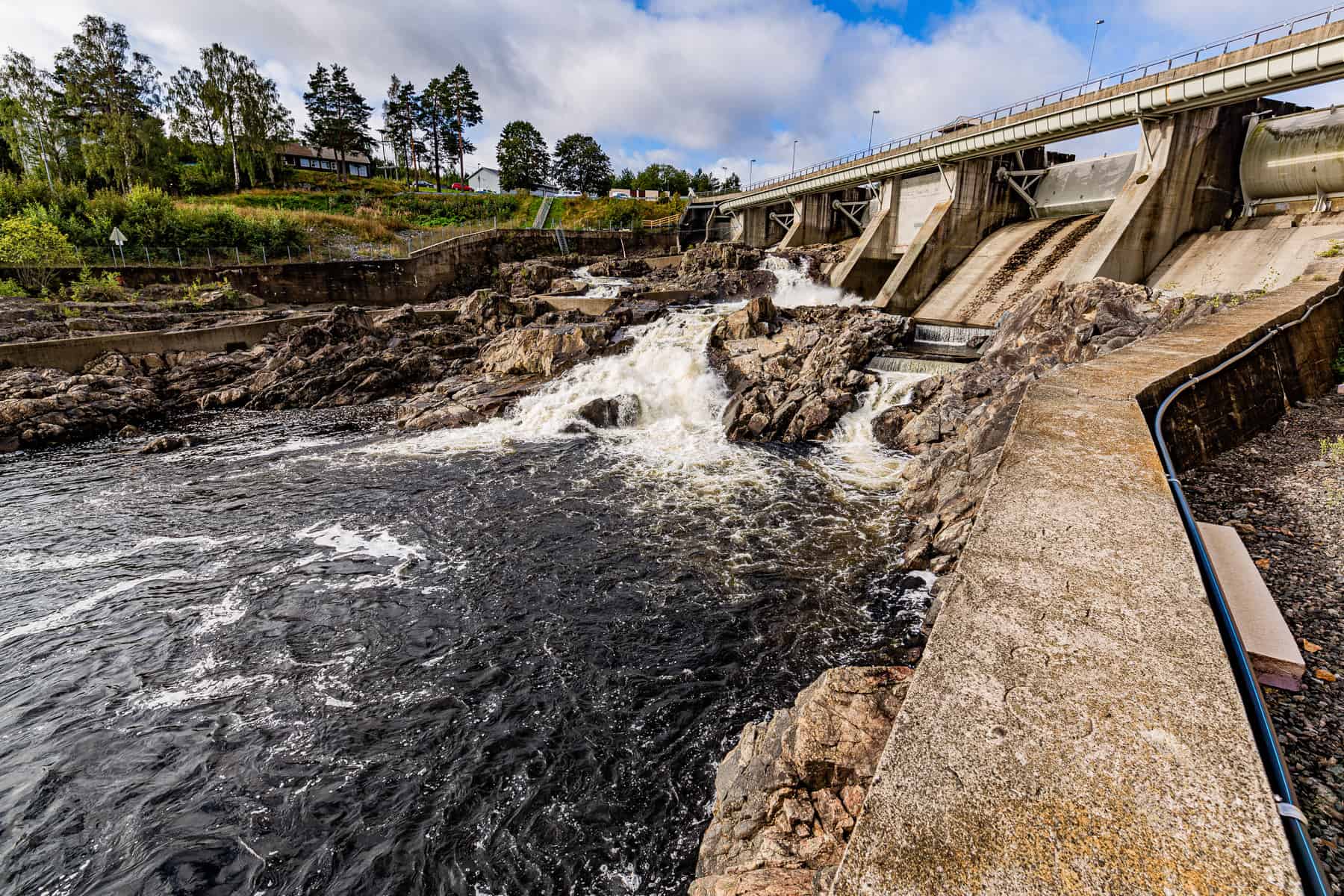Application
Scanmatic monitors mechanical structures in the power industry. There are several current applications shown below:
- Detection of pipe breaks
- Measurement of physical structural changes in ponds
- Measurement of pore pressure around dam
- Measurement of leakage water from ponds
- Measurement of turbidity in leachate from ponds
- Measurement of temperature profile in dams
- Monitoring of sand traps
Technology
Pipe breaks can be detected in several ways, but measurement of water flow at the entrance to the pipe street is often used. If the water flow is greater than the power plant’s capacity to absorb, the pipe burst valve will be triggered. It is also common to compare the water flow at the entrance to the tube street with that going through the turbine. If the deviation becomes too large, the pipe rupture valve is triggered. This requires communication between both ends of the pipeline.
Measuring the temperature profile in the pond reveals whether the pond is about to be excavated. The same applies to the measurement of turbidity in the leachate.
Large dams, and not least the cast, thin-walled vault dams, are largely affected by the degree of filling. The physical form changes as the water level rises.
This change in shape is measured, and when you have a base of experience with values measured at different water heights, an alert can be set up when values outside the established normal are measured. Measuring techniques used can be pendulums that hang vertically at the full height of the dam, or different types of strain gauges.
Pore pressure measurements are the measurement of water pressure usually downstream of a dam. These can be measurement points in the terrain, or in the dam itself downstream of the dam core.
A pore pressure measurement is normally done by core drilling down the desired number of meters, then liners are put down so that pulp cannot slide in and clog the well. Lowers pressure cells into the well and the water level is measured. Pore pressure measurements are often affected by both the fill level of the dam and rainfall, but after a period of data capture you can normally define what is normal and establish warnings in addition to this.
On dams that must have leakage monitoring, there are various solutions to collect the water to be measured. Some dams have conduits downstream of the dam core that lead the water to one or more seepage sumps, in other places the terrain downstream of the dam is used to collect the water. Known profiles are cast into seepage sumps or sills and when you know the formula for the profile and know the height of the water in the sump, water flow/leakage can be calculated. The water level in the sump is usually measured with pressure cells or a float, or non-contact sensors based on ultrasound or radar.
Some leakage measurements, not least in filling dams, are affected by precipitation.
